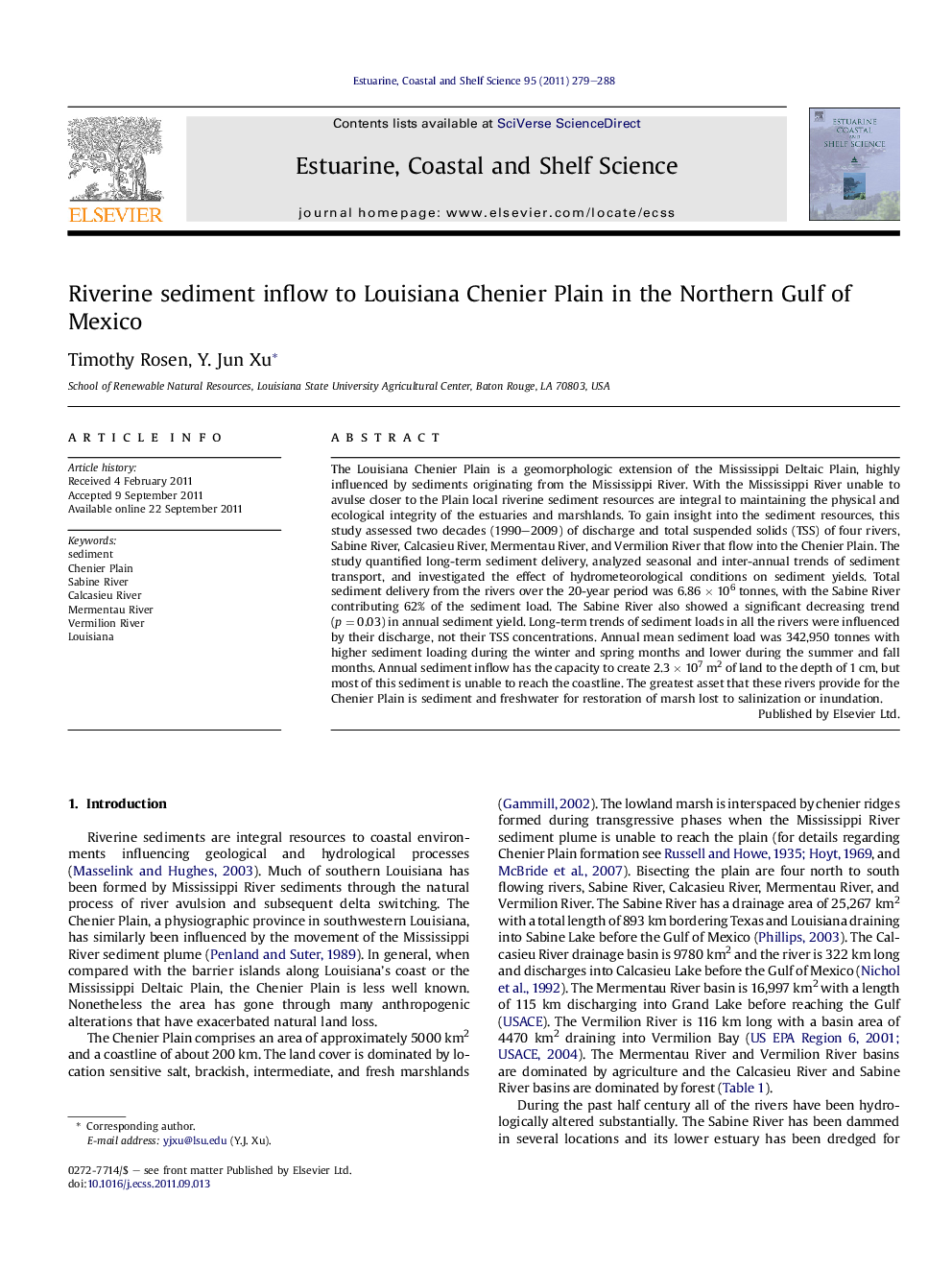| Article ID | Journal | Published Year | Pages | File Type |
|---|---|---|---|---|
| 4540390 | Estuarine, Coastal and Shelf Science | 2011 | 10 Pages |
The Louisiana Chenier Plain is a geomorphologic extension of the Mississippi Deltaic Plain, highly influenced by sediments originating from the Mississippi River. With the Mississippi River unable to avulse closer to the Plain local riverine sediment resources are integral to maintaining the physical and ecological integrity of the estuaries and marshlands. To gain insight into the sediment resources, this study assessed two decades (1990–2009) of discharge and total suspended solids (TSS) of four rivers, Sabine River, Calcasieu River, Mermentau River, and Vermilion River that flow into the Chenier Plain. The study quantified long-term sediment delivery, analyzed seasonal and inter-annual trends of sediment transport, and investigated the effect of hydrometeorological conditions on sediment yields. Total sediment delivery from the rivers over the 20-year period was 6.86 × 106 tonnes, with the Sabine River contributing 62% of the sediment load. The Sabine River also showed a significant decreasing trend (p = 0.03) in annual sediment yield. Long-term trends of sediment loads in all the rivers were influenced by their discharge, not their TSS concentrations. Annual mean sediment load was 342,950 tonnes with higher sediment loading during the winter and spring months and lower during the summer and fall months. Annual sediment inflow has the capacity to create 2.3 × 107 m2 of land to the depth of 1 cm, but most of this sediment is unable to reach the coastline. The greatest asset that these rivers provide for the Chenier Plain is sediment and freshwater for restoration of marsh lost to salinization or inundation.
